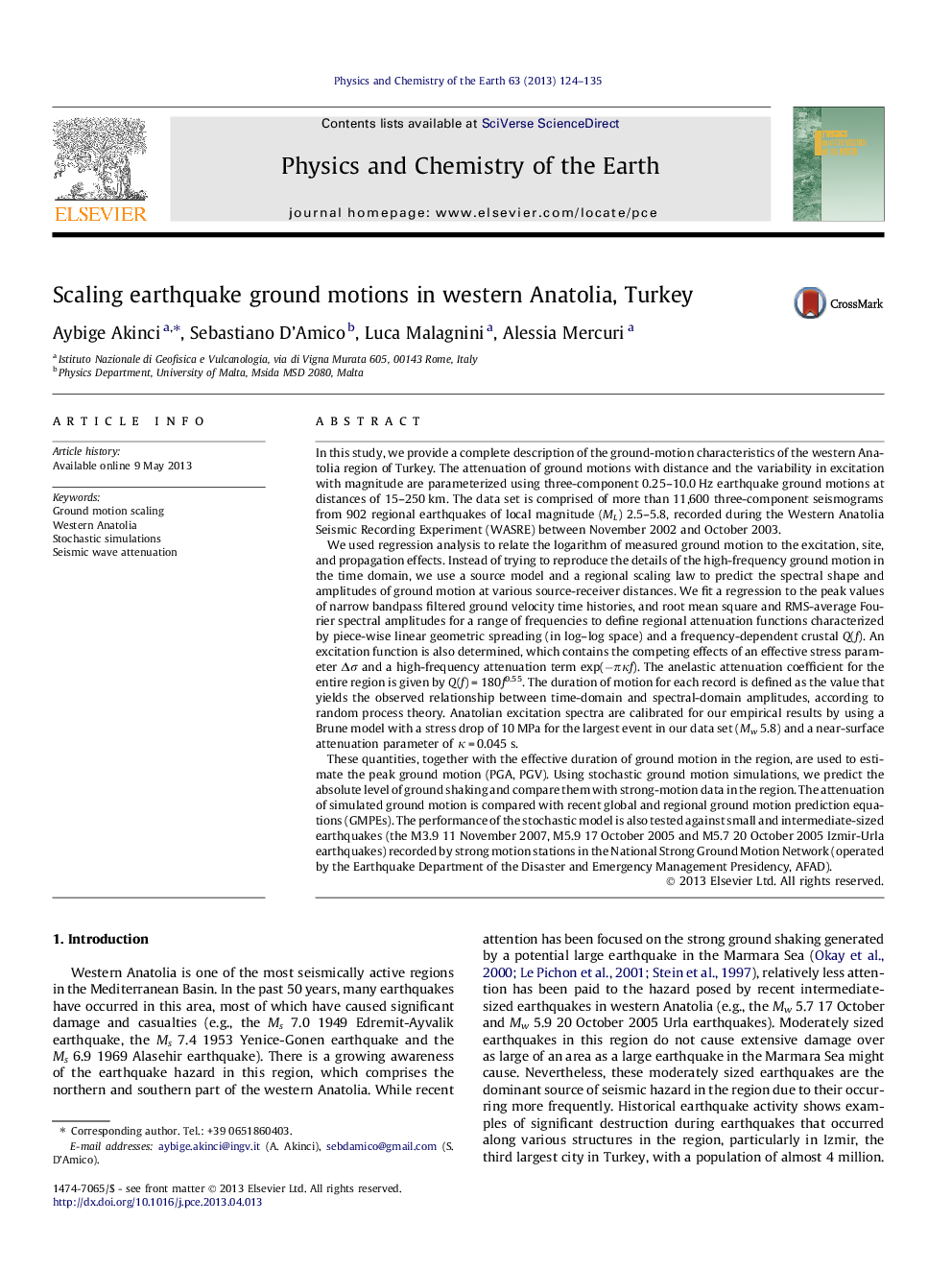| کد مقاله | کد نشریه | سال انتشار | مقاله انگلیسی | نسخه تمام متن |
|---|---|---|---|---|
| 4721054 | 1639360 | 2013 | 12 صفحه PDF | دانلود رایگان |
• A complete description of the characteristic of the ground-motion in the region.
• Estimating the Peak Ground Acceleration and Velocity quantities (PGA, PGV).
• Predicting the absolute level of ground shaking, comparing with strong-motion data.
• Main features of the seismic ground motions caused by moderate earthquakes.
• It may be useful for the seismic hazard assessment studies in the region.
In this study, we provide a complete description of the ground-motion characteristics of the western Anatolia region of Turkey. The attenuation of ground motions with distance and the variability in excitation with magnitude are parameterized using three-component 0.25–10.0 Hz earthquake ground motions at distances of 15–250 km. The data set is comprised of more than 11,600 three-component seismograms from 902 regional earthquakes of local magnitude (ML) 2.5–5.8, recorded during the Western Anatolia Seismic Recording Experiment (WASRE) between November 2002 and October 2003.We used regression analysis to relate the logarithm of measured ground motion to the excitation, site, and propagation effects. Instead of trying to reproduce the details of the high-frequency ground motion in the time domain, we use a source model and a regional scaling law to predict the spectral shape and amplitudes of ground motion at various source-receiver distances. We fit a regression to the peak values of narrow bandpass filtered ground velocity time histories, and root mean square and RMS-average Fourier spectral amplitudes for a range of frequencies to define regional attenuation functions characterized by piece-wise linear geometric spreading (in log–log space) and a frequency-dependent crustal Q(f). An excitation function is also determined, which contains the competing effects of an effective stress parameter Δσ and a high-frequency attenuation term exp(−πκf). The anelastic attenuation coefficient for the entire region is given by Q(f) = 180f0.55. The duration of motion for each record is defined as the value that yields the observed relationship between time-domain and spectral-domain amplitudes, according to random process theory. Anatolian excitation spectra are calibrated for our empirical results by using a Brune model with a stress drop of 10 MPa for the largest event in our data set (Mw 5.8) and a near-surface attenuation parameter of κ = 0.045 s.These quantities, together with the effective duration of ground motion in the region, are used to estimate the peak ground motion (PGA, PGV). Using stochastic ground motion simulations, we predict the absolute level of ground shaking and compare them with strong-motion data in the region. The attenuation of simulated ground motion is compared with recent global and regional ground motion prediction equations (GMPEs). The performance of the stochastic model is also tested against small and intermediate-sized earthquakes (the M3.9 11 November 2007, M5.9 17 October 2005 and M5.7 20 October 2005 Izmir-Urla earthquakes) recorded by strong motion stations in the National Strong Ground Motion Network (operated by the Earthquake Department of the Disaster and Emergency Management Presidency, AFAD).
Journal: Physics and Chemistry of the Earth, Parts A/B/C - Volume 63, 2013, Pages 124–135
